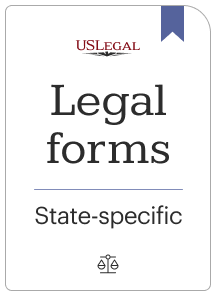

A corporate resolutionoutlines the decisions and actions made by a company's board of directors. A corporate resolution helps the corporation to remain independent from its owners by ensuring that the decisions made by the board and the corporate executives do not create a conflict of interest with the owners. A Board resolution template for dividend is a document that outlines and records the decision made by a board of directors regarding the declaration and distribution of dividend to shareholders. This template serves as an official record of the board's decision-making process and is vital for ensuring compliance with legal requirements and proper documentation within a company. The Board resolution template for dividend typically includes the following key elements: 1. Title and Date: The template starts with a title indicating the nature of the resolution, such as "Board Resolution for Declaration of Dividend," followed by the date when the resolution was passed. 2. Introduction: This section provides a brief introduction to the resolution, stating the purpose, the context, and any relevant details for the dividend declaration. 3. Background Information: Here, the template includes relevant background information, such as the company's financial performance, cash reserves, earnings, and any other relevant factors considered by the board in making the dividend decision. 4. Resolution Statement: The heart of the document, this section outlines the board's decision to declare a dividend. It typically includes the specific dividend amount per share, the record date, payment date, and any other conditions or restrictions on the dividend distribution. 5. Approval and Signatures: The template must include spaces for board members to sign and date the resolution, indicating their agreement and approval. Different types of Board resolution templates for dividends may exist depending on the specific circumstances or requirements of the company. Some variations or additional templates include: 1. Interim Dividend Resolution Template: Used when a company wants to declare a dividend outside its normal annual dividend cycle. This template outlines the rationale and conditions for the interim dividend payment. 2. Final Dividend Resolution Template: Typically used at the end of a financial year, this template identifies the final dividend amount determined from the company's profits and reserves. 3. Special Dividend Resolution Template: When a company decides to pay a dividend that is exceptional in nature or varies from its regular dividend policy, this template lays out the special conditions, justifications, and approval process. 4. Dividend Reinvestment Plan (DRIP) Resolution Template: If a company offers a DRIP, this template is used to outline the details of the plan, including the specifics of reinvesting dividends into additional shares. It is important to note that the content and structure of Board resolution templates for dividends may vary depending on legal requirements, company policies, and specific jurisdiction. Therefore, consulting legal professionals or adapting templates to fit specific needs may be necessary.
Board resolution sample for business closure is a formal document passed by the board of directors of a company, outlining the decision to cease operations and dissolve the business. It is a crucial step in the winding up process and ensures that all legal requirements are met. Below is an overview of a typical Board resolution sample for business closure, including some of the different types that may be applicable in specific circumstances: 1. General Board Resolution for Business Closure: This type of resolution is commonly used when a business decides to voluntarily wind up its operations. It states the reasons for closure, authorizes the necessary actions to dissolve the company, appoints a liquidator, and approves the distribution of assets among the shareholders or creditors. 2. Board Resolution for Insolvency: In cases where a company is insolvent and unable to pay its debts, a specific resolution addressing insolvency may be required. It acknowledges the financial distress of the business, approves the initiation of insolvency proceedings, and empowers the liquidator or appointed insolvency practitioner to handle the closure process in accordance with applicable laws and regulations. 3. Board Resolution for Voluntary Liquidation: Voluntary liquidation is a dissolution process initiated by the shareholders with the aim of winding up the company's affairs and distributing its assets. This type of resolution confirms the decision to voluntarily liquidate the company, appoints a liquidator, and outlines their powers and responsibilities during the liquidation process. 4. Board Resolution for Members' Voluntary Winding Up: When the company's shareholders believe that the business has achieved its objectives and wish to close it down, a members' voluntary winding up resolution is adopted. It specifies the reasons for winding up, appoints a liquidator, approves the preparation of financial statements, and authorizes the distribution of surplus assets to the shareholders. 5. Board Resolution for Creditors' Voluntary Winding Up: In cases where a business is facing financial difficulties and creditors need to be considered, a creditors' voluntary winding up resolution is necessary. It authorizes the board to call for a meeting of the creditors, approves the submission of a statement of affairs, and supports the appointment of a liquidator to handle the winding up process. These are some different types of Board resolution samples for business closure that may be encountered depending on the circumstances of the company.
US Legal Forms boasts a spotless reputation and over 25 years of expertise. Join us today and turn form execution into something easy and streamlined!